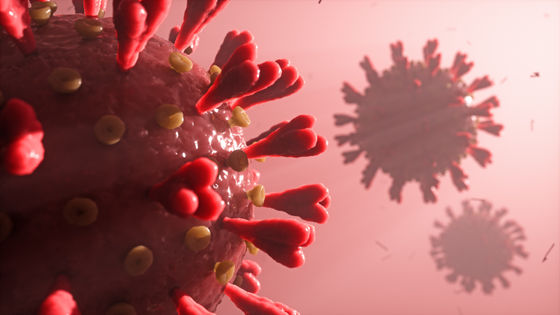The new coronavirus may remain on the screen of smartphones for 'up to 28 days'

The Australian Federal Institute for Scientific and Industrial Research (CSIRO) reported on October 7, 2020 that the new coronavirus (SARS-CoV-2) was found to persist for nearly a month under certain conditions. Experiments conducted by CSIRO confirmed that SARS-CoV-2 persisted longer than influenza A virus on smooth surfaces such as plastic and glass, but some experts said, 'Experiments that are realistic. It's not. '
The effect of temperature on persistence of SARS-CoV-2 on common surfaces | Virology Journal | Full Text
https://virologyj.biomedcentral.com/articles/10.1186/s12985-020-01418-7
CSIRO scientists publish new research on SARS-COV-2 virus'survivability' --CSIRO
https://www.csiro.au/en/News/News-releases/2020/CSIRO-scientists-publish-new-research-on-SARS-COV-2-virus-survivability
Covid virus'survives for 28 days' in lab conditions --BBC News
https://www.bbc.com/news/health-54500673
Lab Study Shows SARS-CoV-2 Can Last on Some Surfaces For 28 Days
https://www.sciencealert.com/study-shows-in-lab-conditions-sars-cov-2-virus-can-last-on-some-surfaces-for-28-days
Previous studies have shown that SARS-CoV-2 'remains in air for up to 3 hours' and 'remains for up to 72 hours on hard, smooth surfaces such as plastic, stainless steel, and glass.' Has been said.
'The new coronavirus survives in the air for up to 3 hours, and thorough hand washing and disinfection are important,' said expert --GIGAZINE.

CSIRO has conducted experiments to inoculate SARS-CoV-2 samples onto the surface of various objects in order to investigate in more detail how materials and temperature affect the residual time of SARS-CoV-2. It was. The experiment used artificial mucus containing SARS-CoV-2 at a concentration similar to that reported in samples of patients with Severe Acute Respiratory Syndrome (COVID-19). The research team inoculated artificial mucilage containing SARS-CoV-2 into stainless steel, glass, vinyl, cotton, polymer and paper banknotes in three environments: 20 ° C, 30 ° C, and 40 ° C. ..
Then, when the research team collected samples 1 hour after inoculation and 1, 3, 7, 14, 21, and 28 days after inoculation and confirmed the activity of SARS-CoV-2, 'most of them in an environment of 20 ° C. SARS-CoV-2 was detected even after 28 days on the material. ' The only exception is cotton, where SARS-CoV-2 became undetectable 7 days after inoculation.
Debbie Eagles, a member of the research team, said, 'At 20 ° C, near room temperature, the virus was very robust and survived for 28 days on smooth surfaces such as cell phone screens and polymer banknotes. A similar experiment with influenza A virus showed that the result was 17 days, which highlights how tenacious SARS-CoV-2 is. '

CSIRO summarizes the results of the experiment as follows.
・ At high temperatures, the time that can remain was short, and at low temperatures, it remained for a long time.
-It remained longer on the surface of non-porous or smooth surfaced materials such as glass, stainless steel, and vinyl compared to porous materials such as cotton.
-Remained longer on paper banknotes than polymer banknotes.
This experiment showed that SARS-CoV-2 may remain on the surface of materials familiar to humans for nearly a month, but 'SARS-CoV- sufficient to develop COVID-19' The amount of 2 is not yet clear. '
In addition, Professor Ron Eccles of Cardiff University in the United Kingdom told the British Broadcasting Corporation (BBC), 'The experiment used artificial mucus, not human mucus. Fresh human mucus. Is a hostile environment for the virus due to the influence of the immune system, so my infectious virus can remain on the surface of an object with mucus for at most a few hours, not a few days. It's an idea. ' The experiment was accused of 'arousing unnecessary fear of the general public.'
In addition, in an experiment conducted using the skin of a person who died of COVID-19, the result that 'SARS-CoV-2 can remain on the human skin for about 9 hours' is shown.
The new corona remains on the skin five times longer than influenza, but there is also a way to deactivate it in 15 seconds-GIGAZINE

Related Posts:
in Science, Posted by log1l_ks





